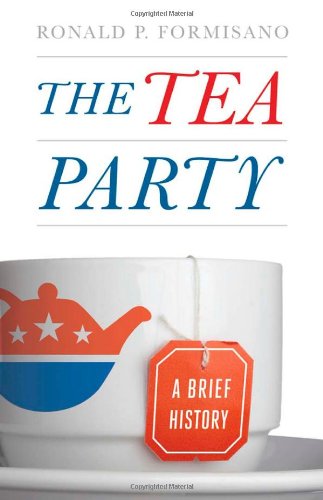

Most ebook files are in PDF format, so you can easily read them using various software such as Foxit Reader or directly on the Google Chrome browser.
Some ebook files are released by publishers in other formats such as .awz, .mobi, .epub, .fb2, etc. You may need to install specific software to read these formats on mobile/PC, such as Calibre.
Please read the tutorial at this link: https://ebookbell.com/faq
We offer FREE conversion to the popular formats you request; however, this may take some time. Therefore, right after payment, please email us, and we will try to provide the service as quickly as possible.
For some exceptional file formats or broken links (if any), please refrain from opening any disputes. Instead, email us first, and we will try to assist within a maximum of 6 hours.
EbookBell Team

4.0
46 reviewsThe Tea Party burst on the national political scene in 2009–2010, powered by right-wing grassroots passion and Astroturf big money. Its effect on electoral politics and the political process is undeniable, but the message, aims, and staying power of the loosely organized groups seem less clear. In this concise book, American political historian Ronald P. Formisano probes the remarkable rise of the Tea Party movement during a time of economic crisis and cultural change and examines its powerful impact on American politics.
A confederation of intersecting and overlapping organizations, with a strong connection to the Christian fundamentalist Right, the phenomenon could easily be called the Tea Parties. The American media’s fascination with the Tea Party—and the tendency of political leaders who have embraced the movement to say and do outlandish things—not only has fueled the fire driving the movement, but has diverted attention from its roots, agenda, and the enormous influence it holds over the Republican Party and the American political agenda. Looking at the Tea Party's claims to historical precedent and patriotic values, Formisano locates its anti-state and libertarian impulses deep in American political culture as well as in voter frustrations that have boiled over in recent decades. He sorts through the disparate goals the movement’s different factions espouse and shows that, ultimately, the contradictions of Tea Party libertarianism reflect those ingrained in the broad mass of the electorate.
Throughout American history, third parties, pressure groups, and social movements have emerged to demand reforms or radical change, only to eventually fade away, even if parts of their programs often are later adopted. The Tea Party’s impact as a pressure group has been more immediate. Whether the Tea Party endures remains to be seen. Formisano’s brief history certainly gives us clues.